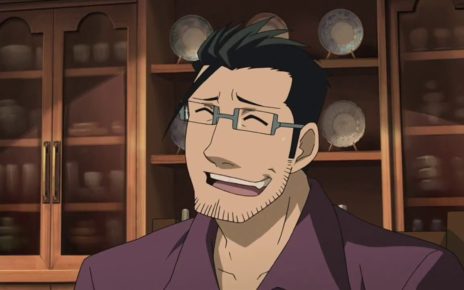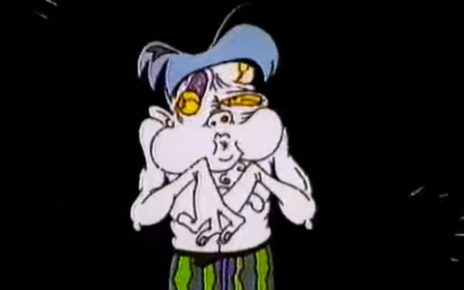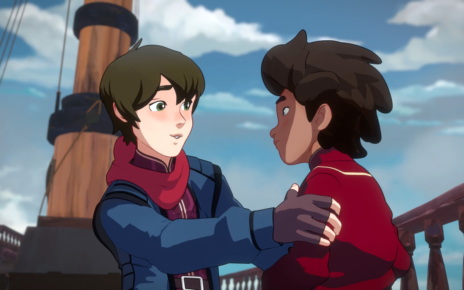Brandon Vietti’s favorite hero is Batman, and probably always will be Batman. Vietti’s always gravitated toward Bruce Wayne’s intellect, wit, and grab-belt of tools — as most of us do. But now Vietti’s older, and as an experienced animation director who’s worked on several Batman TV and film projects — as well as Young Justice, Scooby-Doo, and Superman a host of other properties — for almost two decades, what he appreciates most is Batman’s flexibility.
“The range that Batman has,” he says, from SuperFriends to Adam West to Michael Keaton’s quirkiness to the brooding of Batman: The Animated Series, “and it still works. He’s a great character for that.”
That element is fascinating for someone of Vietti’s background, who started out watching superhero shows religiously in front of a TV and reading comic books, and now deconstructs scripts and rebuilds them into fully formed animated films for a living. He talked to The Dot and Line on a recent afternoon after wrapping up work on his newest film Scooby-Doo! and WWE: Curse of the Speed Demon (which premieres at San Diego Comic-Con this weekend) to share a few tips about his process, his love for Batman, and most importantly, what young animators, cartoonists, and other artists can learn from his long career. Here were some of the best takeaways from our chat.
1. Collaboration is everything. Always.
Everybody has a different idea of what to do with those characters. I guess that’s a challenge but it’s a good challenge because in working with expectations of others — especially when you’re dealing with long running characters like Scooby Doo or DC characters — you get different points of view on how to work with those characters. You learn different aspects of those characters…. Challenge is almost like the wrong word. It’s challenging only because there’s a deadline. Otherwise I like sitting and talking, as I was when I was younger just hanging out with friends and discussing what we would do with characters. We have the same discussions now with the movies we’re making.
2. Your deadline is everything. Always.
The challenge if any is the deadline involved. Once you decide to make one there’s a long list of things that has to happen but part of the green light is you get your date of completion. Those dates don’t move. It can be very hectic trying to go through that process.
3. Your creative babies (in his case ‘Young Justice’), might not always be in your hands, no matter how much you love them. (We asked him what the status on the show was.)
It’s not like there’s a clampdown on things that I say. I just literally don’t have a lot to say. Those greenlights happen far above my level. Greg [Weisman] and I are ready, willing, and able to do it. We have more stories to tell. Phil Bourassa would love to do more character designs in that world. We would like to revisit that world, but we have to wait for higher powers to make that decision….It’s my bosses that go out and get those green lights. Some of those green lights might involve a toy deal.
4. Those streaming sites don’t only give life to old shows. They create work for new talent to break in.
Some of those deals now involve services like Netflix or Hulu or Amazon. [Ed. note: Vietti and his old co-workers are engaged in a campaign to bring Young Justice back, specifically via streaming the show.] That’s the beauty of those new businesses. You’re no longer reliant on a toy deal or a specific TV network to bring life to a show. That’s really exciting for us because it’s leading to a lot of new work in the businesses. A lot of new jobs in the business for animators and a lot of new recruits to the animation field.
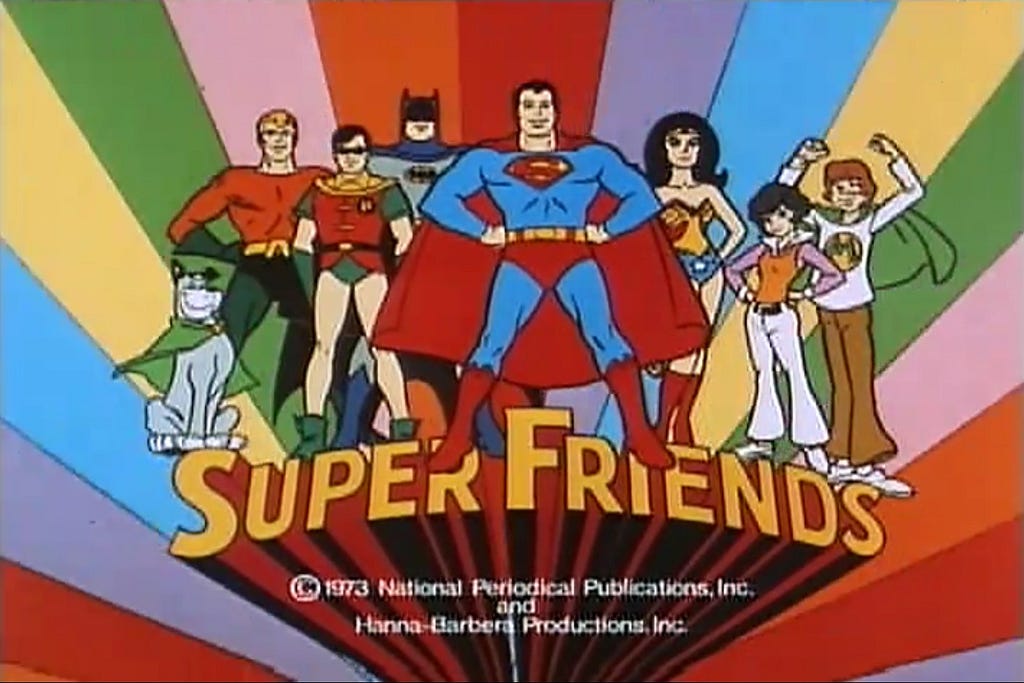
5. What you watch when you grow up might change your life.
SuperFriends is my earliest memory of the DC universe. I was just the right age when shows like Transformers and G.I. Joe came out. 10 years old when G.I. Joe was on. Transformers was the best thing ever. ThunderCats shortly after. Voltron. Robotech. Those were all shows I ran home after school to watch back, when you could only watch cartoons mid-week in that afternoon slot. Between 3 and 5 were these magical two hours…. Later in high school was when Bruce Timm’s Batman: The Animated Series hit. That was a game changer. It was so sophisticated. The art direction appealed to me as a young artist, great stories that appealed to me as a young writer. I really carried Batman The Animated Series with me when I went to art school at the Joe Kubert School.
6. The art can be just as important as the writing. And he’s pumped for the new Bruce Timm ‘Killing Joke’ adaptation.
Of course! That was one of the big Batman books I remember reading when that came out. I was collecting at the time. It was such a big event book, shocking, shocking things that happen in it. At the time I was also really into Brian Bolland’s work. It was that story, but it was also that artwork coming together in that short story that was so effective. I don’t know if it would have been as impactful with another artist — or it might have been impactful in a different way. But there was a reality in Brian’s work that really just made the events hit like a ton of bricks.
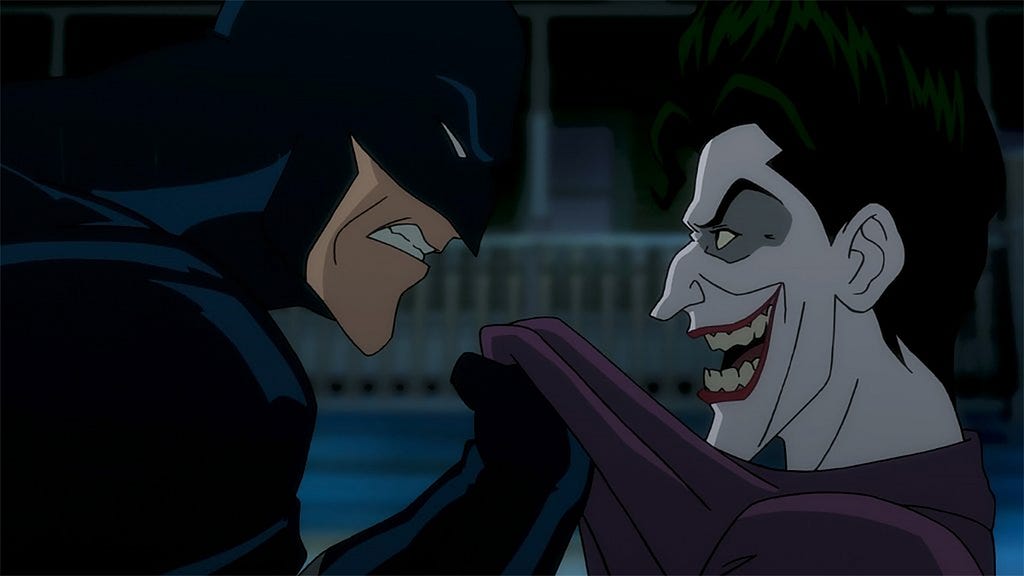
7a. When applying to jobs: Show the hiring manager work they might recognize. 7b. Always apply to job openings to work with Bruce Timm.
It was inspiring and intimidating at the same time. My first job was working for Bruce on The New Batman/Superman Adventures. I was straight out of school. I honestly didn’t even know that I was going to go into animation. It was sort of a weird fluke. I was trying to break into comics, and I was doing an animated style, much like Bruce’s, my own variation of it. Bruce had run an ad in the Comics Buyer’s Guide looking for new recruits, as he was getting the Batman/Superman Adventures off the ground. It was around the same time he was doing the new Superman series. I think it had aired. I was freeze-framing that show. I would tape it on my VCR and freeze-frame it, pause it, and sketch the characters off screen. Some of that stuff was in my portfolio. I sent that in. It led to an interview. I met with Bruce. I met with Glen Murakami. And they hired me.
8. Sometimes your dreams don’t work out the way you expect them to.
I thought animation would be sort of a side job until I could find work in comics. I realized once I got there that animation was where I was meant to be. Animation was the thing that captured my imagination when I was young. It was what had me running to the TV every day after school. It was what got me into comics. I didn’t know it, but I was meant to go into animation.
9. Fear is the mind killer, and it takes a lot of work to learn the ropes.
I was working with top guys in the field. There weren’t a lot of other action shows at the time. Cartoon Network wasn’t really big and up and running yet. Nick wasn’t doing action stuff. Disney wasn’t doing action stuff. They [at Warner Bros. Animation] were kind of the only game in town, and they’d been doing it for a while, and they were really good at it. And I was straight out of school! [Laughs.] I just could not match them. It took a while. It took a few years of just being in the business and learning the skills that I needed to. After the Batman show I went to Sony Animation for several years and worked on a number of shows, jumped from storyboarding to directing, I got my first promotion there, came back to Warner Bros. for another Batman show. I worked on The Batman….
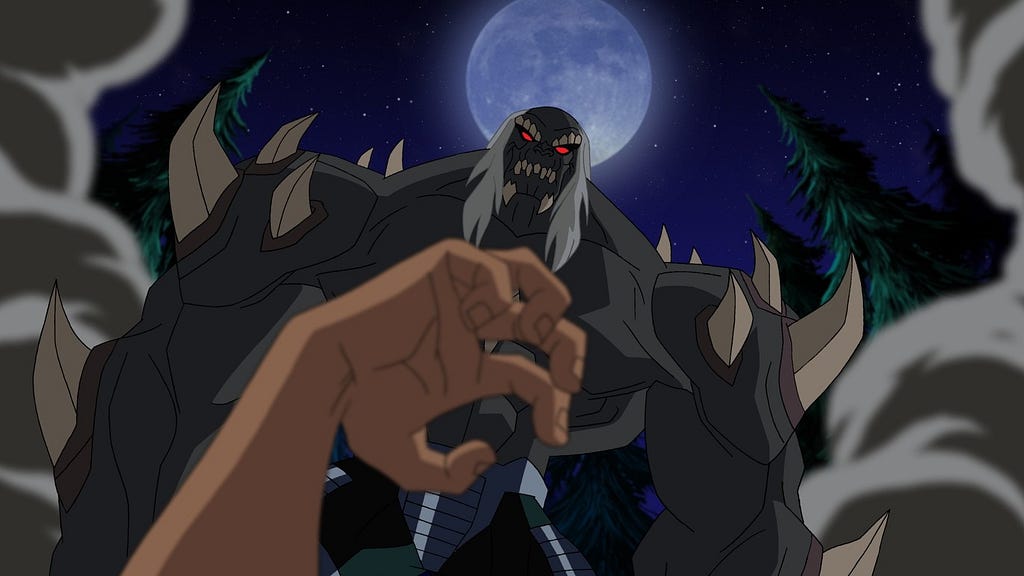
10. But then you can come back and show them what you got.
But I was dying to work with Bruce again to show him I’d grown up, that I’d improved. I’d been working on my skills, and I wasn’t that young guy that didn’t know anything anymore. So I worked really hard, and I tried to get his attention. I guess it worked: He hired me to co-direct on the Superman Doomsday movie….Finally, after being so young and so intimidated to work for him, having the skills to come back and work for him as a director was gratifying for me. I felt like I’d achieved what I set out to do in animation, finally.
11. You don’t stop there. You have to constantly look for new teachers and collaborators to challenge you. Especially when you work with sprawling multi-character storylines, as in ‘Young Justice’.
For Young Justice, I learned a lot from Greg [Weisman, co-creator] in how to do that…. I was always trying to insert myself into the story process. It’s part of my job [as a director] to break scripts down: what makes every character tick, how do you bring that out of the script, how do you make it better than what’s in the script, how do you make visuals and tell the story that’s on the page visually. It was something I was fairly obsessed over and put a lot of work into and had a lot of ideas about, but I didn’t necessarily know how to start from zero. It’s one thing to get a script in front of you, and analyze the heck out of it, or even just watch something else and armchair-quarterback a story once it’s done. To start from zero is a hell of a challenge, and Greg was a great guide and teacher in that for me.
You can start to craft more interesting situations for them to get into, to really challenge them, and make them make a choice that’s interesting. That’s not necessarily predictable.
12. The best place to start is to intimately understand your characters and their motivations. Take notes.
What we really did was just have a ton of conversations, discuss a lot of things, and just make a lot of notes. We just began to write down story ideas and character arc ideas on 3×5 cards and building a wall of 3×5 cards. This wall developed into episode ideas: you get a bunch of material down, you start to organize the material, the material starts to reveal itself, like OK, this is one episode. This is another episode. This episode really needs to be five episodes later. You stare at the Matrix long enough, and it starts to become organized, but first you got to make that Matrix. Get as much information down as possible. It almost tells you how to organize it. A lot of it comes down to what makes a character tick. What is the backstory of the character and what is the future of the character? Once you get that worked out the characters start to tell you what happens in between. That’s when it gets really fun.
13. Then you ramp it up a notch.
The characters literally start talking to you and help you determine what the next best course of action is. Or what they’re going to do in a given situation. Knowing that, you can start to craft more interesting situations for them to get into, to really challenge them, and make them make a choice that’s interesting. That’s not necessarily predictable. That’s probably not the best definition of how it’s done, but it is kind of what goes on in the writers’ room. It’s messy at first, but it starts to self-organize.
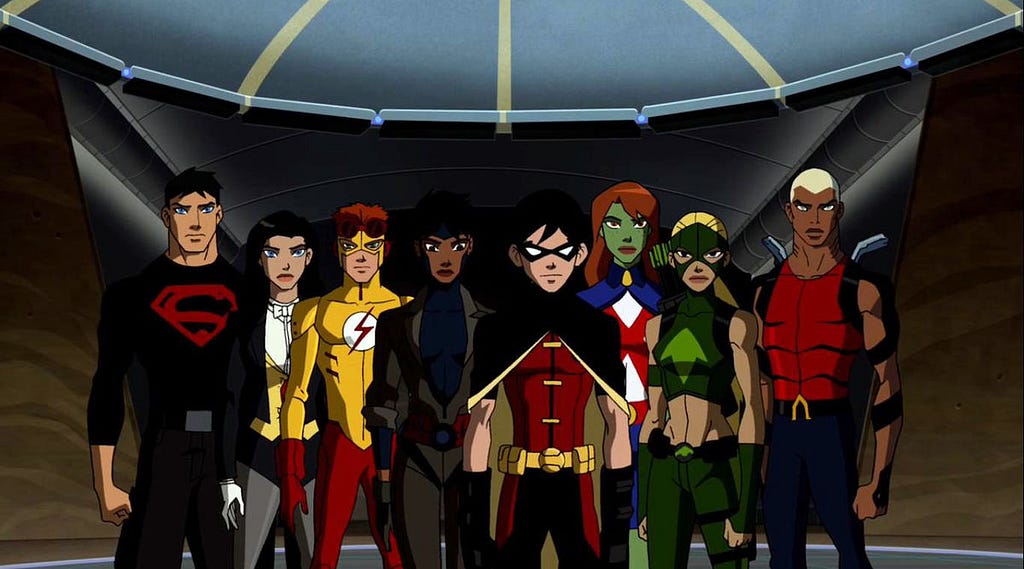
14. On diversity in cartoons: Reflect the world around you.
[With Young Justice] we really want to just reflect the world around us. The shows we make are set in the world that we live in, and so we want to reflect that world. It’s that simple. The world doesn’t have just one race, it has many races of people. We want all of that in there as much as we can write that in. That’s what the world is, why would you write it any differently?
It’s important for people that are coming right out of school to know that your first job may not be your best job.
15. You have to turn hardship into fuel to make yourself better. It will take time, and that’s OK.
On the first Batman show I worked on was just that I was so young. Most everybody on the crew was at a skill level so far beyond me. It’s important to find your way in and find a job that can help you learn in the way that’s most comfortable for you. The New Batman/Superman Adventures was not an easy job for me. No job should be easy, because if it is you’re not challenged, and you’re not going to learn either. But it’s important for people that are coming right out of school to know that your first job may not be your best job. It takes time to learn.
I put a lot of pressure on myself, through my first job, working with Bruce. And I think half of that I psyched myself out. Because Bruce was just so big to me. And even working with Glen Murakami. I hadn’t known his name before, but once I got to work with him — the man is so smart and so good and so sharp — that I often felt like I couldn’t keep up with him and that I psyched myself out trying. There’s a growing process. Everybody needs to go through it on their own. That’s an interesting part of being an artist. You have to find your own path. That was a really difficult lesson for me to give myself that permission to not be the perfect hotshot right out of the gate.
This interview has been condensed for length and clarity. Read more Dot and Line interviews.
Thanks for reading The Dot and Line, where we talk about animation of all kinds. Don’t forget to ❤ this article and follow us on Twitter and Facebook.



